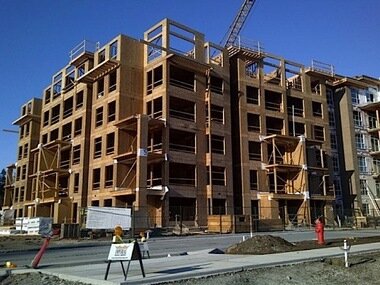Sustainable Timber – Benefits More

With a trade background in carpentry & joinery much of my work over the years has been with timber - building floor, wall and roof frames, constructing decks and pergolas, laying strip and sheet floors, building stairs as well as doing fix-outs other wise known as finishing carpentry.
When I started my trade, the framing timber of choice was Oregon/Douglas Fir for its ease of nailing and handling. We used this for wall and roof framing and floor framing to first floors. For ground floor framing Australian rough sawn hardwoods was standard for bearers and joists as they provided the best general durability class in sub-floor areas however they did come with extra weight, varying dimensions and lots of splinters, though you did get use to that somewhat.
Much technology however has advanced the use of plantation pine in recent years with a broad selection of engineered timbers for a range of purposes and fairly consistent supply of a once shunned product - unstable and lower strength qualities was the perception and the experience.
And gone are the days of large section solid Oregon supporting beams - you can get more white-ant resistant laminated structural beams from less tree's and with consistent dimensions. You can construct a complete house frame from floor frame to roof frame that is white ant resistant - especially helpful where white ants are prevalent.
Oregon had a premium price being imported mostly from British Columbia and north west USA with some from New Zealand. Pines on the other hand are grown in Australia, which supports local industry, and we do source from other countries which import engineered products like Laminated Veneer Lumber aka LVL's.
With a finite supply of the planets resources, and looking towards our children's futures, there is no argument for replacing the depletion of old growth timbers that support many habitats with renewable resources like plantation pine and all of its many derivatives.
As a product for carpenters, engineered pine products are lighter, less bulky and have consistent dimensions meaning faster construction times, easier handling and better finishes which is good for owners.
Lastly, various types of treatment are available depending on the application of the timber, providing more options with specific resistance against white-ants and fungus - two common enemies of a product that will last forever when looked after.

